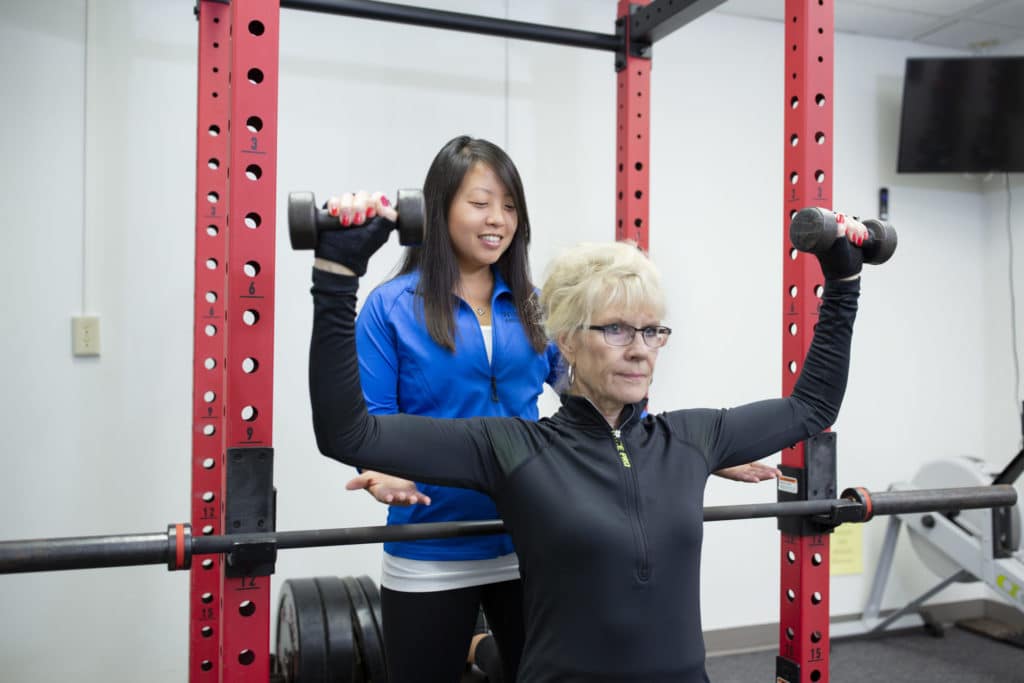For decades, women have been targeted with fitness phrases like, “long, lean muscles”, “trimmed and toned”, and “belly-blasting exercises”. This has lead millions of women to spend countless hours toiling away on cardio equipment and then exhausting the “low weight, high reps” notion. The idea that women will “bulk up” from lifting heavy weights was and is a pervasive misconception; thankfully, parts of the fitness industry have slowly been changing this mindset (McCall, 2014).

While the average woman does not possess enough testosterone to end up looking like the female version of the Hulk, some would argue that the women they see lifting heavy weights have “bulky” muscles. Any woman, who has significant muscle mass like a bodybuilder, did not achieve that look overnight. To build significant amounts of muscle takes an extremely disciplined diet coupled with 1-2 hours spent in the gym most days of the week. Overcoming the false ideas that lifting heavier weights will make you look like a man will allow us to focus on the physical benefits women want to see (i.e., more muscle definition, weight loss, etc.).
When women say they want to “tone” what they really mean is they want to build muscle (i.e., firm) and lose fat (i.e., have more defined muscles). This is accomplished by lifting heavier weights and eating the appropriate amount of calories that come from a balanced, nutrient-rich diet. Tone actually refers to the shape of a person’s muscles when they are at rest, which is something that is genetic, and therefore cannot be changed.
What do we mean by heavy weights? It will vary for everyone, but it is a weight that you can lift 6-10 times for 3 sets or less. Additionally, the exercises we want to focus on are compound lifts (e.g., squats, deadlifts, row, and overhead press) that will strengthen you for the activities that you do every day, like lifting kids, putting away groceries, reaching for things, etc. Stronger muscles decrease the risk of injury by helping you maintain proper form while increasing joint stability and shock absorption (Westermann, MD, 2018). The longer a person is able to maintain the strength to safely complete their activities of daily living and hobbies, the longer that person is able to maintain his or her independence.
In addition to strengthening your muscles, weight lifting also strengthens your bones. According to the National Osteoporosis Foundation (2021), one in every two women who are aged 50 or higher, will break a bone due to osteoporosis. Incorporating weightlifting into an exercise program has been shown to promote bone growth and slow the progression of bone loss (Hong & Kim, 2018).
Strength is great, but cardio is the best way to lose weight, right? Not necessarily. Even though one session of cardio burns more calories than one lifting session, lifting will keep your basal metabolic rate elevated after your workout is over, which means increased caloric burn while at rest (Osterberg & Melby, 2000). The study conducted by Osterberg and Melby specifically found that women who lifted weights for 100 minutes were able to increase their metabolism 4.2 percent for 16 hours after their workout was finished. Additionally, another study conducted in 2017 found that walking alone resulted in decreased lean mass while a combination of walking and weight training resulted in decreased fat while maintaining lean muscle mass (Beavers et al., 2017).
Adding in a session or two of weights each week can help improve your joint function, slow the progression of bone loss, improve your mood and mental health, improve body composition, and help with weight loss or weight maintenance.
If you have never entered the lifting area of the gym it can be intimidating, but our staff at the Wellness Center are here to help you! There are several options ranging from our group exercise classes for a more social option, to personal training with one of our certified personal trainers for one-on-one guided help. Contact the Wellness Center at 507-831-0672 to learn more!
By Lindsey Englar, Wellness Center Supervisor, ACE-PT, ACE-CES
References:
Beavers, K. M., Ambrosius, W. T., Rejeski, W. J., Burdette, J. H., Walkup, M. P., Sheedy, J. L., Nesbit, B. A., Gaukstern, J. E., Nicklas, B. J., & Marsh, A. P. (2017). Effect of Exercise Type During Intentional Weight Loss on Body Composition in Older Adults with Obesity. Obesity (Silver Spring, Md.), 25(11), 1823–1829. https://doi.org/10.1002/oby.21977
Hong, A. R., & Kim, S. W. (2018). Effects of Resistance Exercise on Bone Health. Endocrinology and metabolism (Seoul, Korea), 33(4), 435–444. https://doi.org/10.3803/EnM.2018.33.4.435
McCall, P. (2014, September 22). 4 Myths about Strength Training for Women. ACE. https://www.acefitness.org/education-and-resources/professional/expert-articles/5040/4-myths-about-strength-training-for-women/
National Osteoporosis Foundation. (2021). What Women Need to Know. National Osteoporosis Foundation. https://www.nof.org/preventing-fractures/general-facts/what-women-need-to-know/
Osterberg, K. L., & Melby, C. L. (2000). Effect of acute resistance exercise on postexercise oxygen consumption and resting metabolic rate in young women. International journal of sport nutrition and exercise metabolism, 10(1), 71–81. https://doi.org/10.1123/ijsnem.10.1.71
Westermann, R. W., MD. (2018, June). Muscle Strength and Balance are Important for Healthy Joints. University of Iowa Hospitals and Clinics. https://uihc.org/health-topics/muscle-strength-and-balance-are-important-healthy-joints
